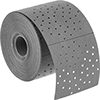Filter by
Width
For Use On
Abrasive Backing Material
For Finish
Material
Performance
Mount Type
Export Control Classification Number (ECCN)
DFARS Specialty Metals
For Use With
Nylon Mesh Grade
Manufacturer Equivalent Model
About Sanding Abrasives
More





































































